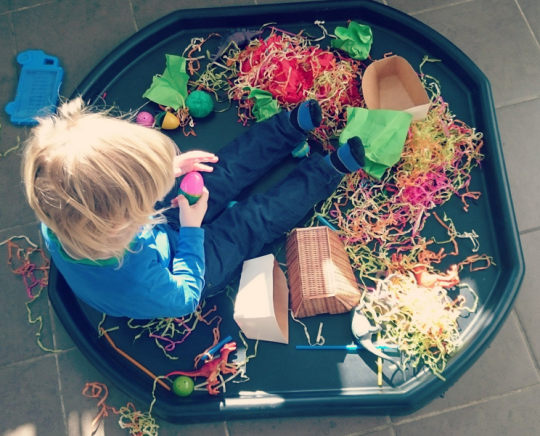
All children can benefit from sensory play but if you have a child with autism, then a sensory room or playspace could make a real difference to the way your child develops and engages with the world. The purpose of a sensory room is to create a safe, calming environment in which a child can safely explore sensory development at her own pace. But while experts will charge you a fortune to turn your spare bedroom into state-of-the-art sensory play space, it's perfectly possible to create one yourself, even on a limited budget. Here's how...
First things first. What is a sensory room?
According to Brainwave - a charity which supports children with physical, sensory, learning, cognitive and behavioural difficulties - autism is a lifelong developmental condition which can affect everything from how a person communicates and relates to others, to how they make sense of the world around them. This can include particular sensitivity to sounds, touch, tastes, smells, light or colours.
Routine daily activities - from putting on clothes to washing hands - can create sensory overload for a child with autism, so a sensory room is a way of offering a safe space where a child can explore sensory stimulation without feeling overwhelmed. As well as stimulating the five main senses (sight, smell, taste, touch, hearing), a sensory room can also help to develop two additional senses - movement and body awareness.
When creating a sensory space, it's vital to take into account your child's individual sensory sensitivities. What one child may love, another might loathe. Some children will adore having lots of sensory stimulation ranging across all seven senses, for example, while other children might simply find that too much to contend with, preferring to focus on on or two sensory experiences at a time.
But to get your ideas flowing, here are a few items that we think might help create a sensory haven for your child, based on each of the senses.
Balance
Some children with sensory processing disorders find it very difficult to maintain a sense of balance, which can lead to anxiety and fear around games and activities which involve being unbalanced. A balance board can help with sensory integration,and they're great fun too. Try this one from Mookie, currently available from Amazon for £10.99.
Body Awareness
Some children with autism find real comfort in the experience of pressure gently being applied to their body, whether that's through a giant bear hug or a sensory development tool such as a weighted blanket, which can stimulate the brain to release the chemicals serotonin and dopamine, enhancing wellbeing and having a calming effect. For children who have a short attention span or who fidget lots, lap weights can also help. This lap weight
is £37.95 at Amazon right now.
Sight
We all know that creating the right mood through lighting is an important part of interior design, and that's never more important than when creating a sensory space for a child. Some children are very sensitive to light so will prefer darkened spaces while others feel more comfortable in a very brightly lit space. Choose your sensory room lighting carefully, based on your child's individual preference, but we love this Rainbow in my room projector LED night light lamp, currently £5.80 with free delivery from Amazon.
Smell
Again, smell is very personal sense, so what your child might love in a sensory room experience might not appeal to another child. A Scentsy fragrance warmer is a clever way of creating a comforting or uplifting smell in a room without the flame or fire hazards associated with lighting candles.
Taste
A sensory room can be the ideal place to explore new tastes, whether that's through snacks or some sort of game along the lines of guess the flavour. I've certainly always found that my children are more inclined to try new foods and flavours if I can make the experience part of a game. Serving snacks inside this Glow crazy doodle dome might be one way of encouraging your little one to explore new tastes, but children with oral hypersensitivity may also prefer to explore new foods by touching them before tasting them. These Chewbuddy chewable toys might also be worth exploring further if you're looking to add something which offers sensory relief to your sensory space.
Touch
A Tuff spot is a heavy-duty plastic tray with raised sides, so it's perfect for messy play, which many children with autism enjoy and find has some therapeutic value. You can pick up a Tuffspot here for £15.95 with free delivery from Amazon.
Sound
Whether you play music directly into your sensory room or provide the option for your child to listen to sounds or music via headphones, it's worth choosing your tunes carefully. This book of song games for sensory integration comes with 2 CDs and could be a useful addition to your sensory room or play space.
We'd love to hear your own thoughts or experiences on creating a sensory room - pop over to our Facebook page to share your own ideas or product suggestions.






















Comments